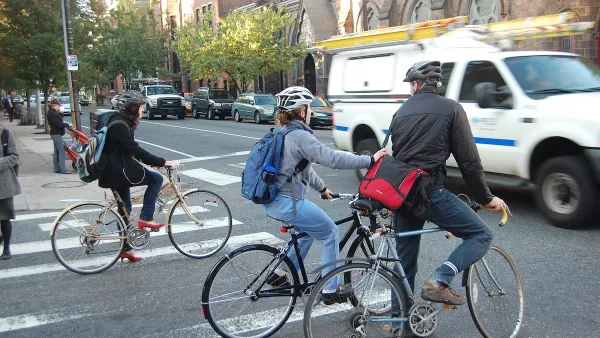A new report from Stanford University looks at the changes in incomes and neighborhoods.
Times writer Travernise looks at a new study by Stanford University. According to Travernise, "the findings show a changed map of prosperity in the United States over the past four decades, with larger patches of affluence and poverty and a shrinking middle."
The study analyzes the changes in neighborhoods and the growing wealthy suburbs.
"Lawrence Katz, an economist at Harvard, said the evidence for the presumed adverse effects of economic segregation was inconclusive. In a recent study of low-income families randomly assigned the opportunity to move out of concentrated poverty into mixed-income neighborhoods, Professor Katz and his collaborators found large improvements in physical and mental health, but little change in the families' economic and educational fortunes."
"But there is evidence that income differences are having an effect, beyond the context of neighborhood. One example, Professor Reardon said, is a growing gap in standardized test scores between rich and poor children, now 40 percent bigger than it was in 1970. That is double the testing gap between black and white children, he said."
Thanks to Cathie Pagano

Planetizen Federal Action Tracker
A weekly monitor of how Trump’s orders and actions are impacting planners and planning in America.

San Francisco's School District Spent $105M To Build Affordable Housing for Teachers — And That's Just the Beginning
SFUSD joins a growing list of school districts using their land holdings to address housing affordability challenges faced by their own employees.

The Tiny, Adorable $7,000 Car Turning Japan Onto EVs
The single seat Mibot charges from a regular plug as quickly as an iPad, and is about half the price of an average EV.

Seattle's Plan for Adopting Driverless Cars
Equity, safety, accessibility and affordability are front of mind as the city prepares for robotaxis and other autonomous vehicles.

As Trump Phases Out FEMA, Is It Time to Flee the Floodplains?
With less federal funding available for disaster relief efforts, the need to relocate at-risk communities is more urgent than ever.

With Protected Lanes, 460% More People Commute by Bike
For those needing more ammo, more data proving what we already knew is here.
Urban Design for Planners 1: Software Tools
This six-course series explores essential urban design concepts using open source software and equips planners with the tools they need to participate fully in the urban design process.
Planning for Universal Design
Learn the tools for implementing Universal Design in planning regulations.
Smith Gee Studio
City of Charlotte
City of Camden Redevelopment Agency
City of Astoria
Transportation Research & Education Center (TREC) at Portland State University
US High Speed Rail Association
City of Camden Redevelopment Agency
Municipality of Princeton (NJ)




























